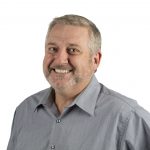Tell me a little about yourself.
In 1995 I invented a magnetic filter for the automotive industry as an aftermarket compliment to the traditional disposable paper filter. Conducted testing and product development for 5 years. We went to market with it in 2000 and found the domestic market to be a costly challenge to educate the customer of the value. In 2002 we redirected our marketing and sales into the industrial market. Acceptance of our technology was positive and in answer to application demand our product range of magnetic filters expanded to over 200 different formats. We supply our filters to the Oil & Gas, Mining, Manufacturing, Marine and Power Generation industries. Our main focus is for filtration of rotating equipment: hydraulics, gear lube, fuels and coolants.
How did you become involved in the wind industry?
We have been trying to enter the wind industry for about eight years and have found it’s not a very friendly place to bring new technology to market. When I read product information to improve technology the focus is directed at component design and quality. Very little information is directed at the type and quality of lubrication oil, hydraulic and coolant fluid and management. I have yet to come across serious discussions on the employment of quality filtration for all the applications on a windmill. There appears to be little interest in these two critical areas.
Why do you say that?
Our observations identified that the windmill OEM’s and the service industries have a closed shop when it comes to aftermarket filtration technology. This is a similar culture to what we have experienced over the past 10 years in many other industries where many OEM’s and the related service industry rely on parts and service to support their business model.
Over the past five years we have noticed a significant increase in the importance of equipment reliability in the mining and oil & gas industries by the OEM’s and the end users. Reliability is the focus of informed maintenance managers, and quality filtration is the foundation of ensuring high cleanliness levels to extend equipment component life thereby increasing profitability.
What is the One Eye magnetic filtration system?
OEI environmental industrial and magnetic filtration systems have been developed over the last 10 years and are designed to work with and compliment existing traditional filtration and in many cases replace them. Incorporating the new rare earth magnetic technology in our patented designs allows filtration of ferrous and non-ferrous contamination down to sub-micron levels without flow restriction.
How do you filter non-ferrous contamination with a magnetic filter?
There are two very simple ways. (1) Entrainment: This occurs when ferrous contamination (under 10 microns) makes contact with the non ferrous contamination and becomes entrained in the larger non ferrous contamination while in flow. (2) Static Adhesion: When flowing as gas or liquid through pipes a static charge is created and attaches itself to every particle in the flow. A static charge has a magnetic field. When the non-ferrous contamination is entrained with ferrous contamination and or has a static charge and exposed to our powerful magnetic fields they are trapped on our magnetic filters. This occurs in engine oil, gear oil, coolant, hydraulic and diesel fuel systems.
Where does the ferrous contamination under 10-microns in size come from?
There are many sources. (1) Equipment component manufacturing and assembling leaves this fine contaminant in the pores of the metal. (2) New hydraulic fluid, coolant, lube oil and fuels all have ferrous metal contamination under 10 microns to sub-micron in size resulting from corrosion and erosion of carbon steel storage reservoirs and pipelines that transport them to the end user. (3) Component wear (4) Inadequate air breathers on reservoirs and engines. Keep in mind your eye can only see particles over 40 microns in size.
Why is it important to remove contamination under 10 microns to sub-micron?
Contamination under 10 microns down to sub-micron in size causes the majority of premature wear in all manner of rotating equipment. Due to the advances in manufacturing the tolerances on the components for hydraulic systems are under a micron. Bearing tolerances are also under a micron. Let’s take for example on the V80s and V90s the traditional filtration employed has the ability to filter contamination down to the 20-micron range. In the coolant the fine ferrous metals cause wear of the pipes and pumps and degrade the glycol. Are the components protected from premature wear?
What other value does employment of magnetic filters offer?
Oil analysis is a very important tool to improve reliability. Employment of magnetic filtration offers another level of monitoring component wear. The analysis of the trapped contamination on the magnetic filter rod will tell you what is wearing and an understanding at what rate the wear is occurring. This creates a valuable opportunity to conduct proactive preventative maintenance. It will also tell the customer if the components are inferior in design and may become a warranty issue. Many of our customers in the oil & gas service industry direct the operators to check the magnetic filters before start up to see if there is any indication of component failure and if so, the unit is pulled from duty and the problem fixed rather than failing in the field.
PM’s are a very important factor for equipment reliability and when our customers employ our magnetic filters they are able to extend the PM’s by two and three times creating maintenance cost savings and increased operational time all due to higher levels of cleanliness. In most applications after employment of our filters the lube oils, coolant and hydraulic fluids are cleaner than when purchased new. We also recommend all new oils, fluids and fuels be pre-filtered by our filters before employment.
Another cost savings our technology offers is when you increase the efficiency of the whole system and extend PM’s a savings will be realized in the safety factor by reduced maintenance on the tower. Wind farms are inherently dangerous because of the height, so when travel to and from and actual work on the towers in reduced the opportunity for injury is also mitigated.
Are there other magnetic filter manufactures?
Yes, traditional magnetic filters have been around for 50 or more years and have not been well received by the industry as they are not the most effective. Traditional magnetic filter rods and plugs are made out of ceramic magnet technology and have weak magnetic fields that have to be exposed to the fluid to be effective. They have very little resistance to vibration and heat and will lose their strength. They will also crack from temperature change and vibration and release particles under 10 microns in size into the fluid and become a wear contaminant that will magnetically stick in valves, shafts and bearings, etc. Most OEM’s who employ magnetic filter rods and plugs at the factory still use ceramic magnet technology.
Are the filters used on any type of wind turbine in any class, or are there restrictions?
Our filters have application on all manner of rotating equipment employed on wind mills and are easily installed, serviced and will give 10+ years of service.
How can customers purchase your magnetic filters?
We have distributors around the world. Just log onto our website and you will find one in your area. If not, call or e-mail us and we will take care of you.
I have a question about your company name and the logo of a bear with a patch over one eye?
The legend of old lucky One Eye, it’s a good story about a large grizzly bear who lived in the Big bend valley in the eastern Kootenays of British Columbia, Canada. One evening 30 or 40 years ago he decided to munch on some human Hors d’œuvre in a camper parked at Jeb Lake. After removing the door the grizzly bear stuck his head into the camper doorway ; the father did not warm up to the idea and shot the bear in the head. The shot did not kill the bear and he exited stage left leaving his eye behind. Many went hunting the one eye grizzly with no luck. As the years went by One Eye legend grew, he became larger; ate more people, and there are rumors his offspring only have one eye as well. Twenty years ago two business partners and I were camping at Jeb Lake and an old timer told us the story. It clicked for us and we named a new investment company after the lucky bear, One Eye Holdings. We ran the company for a few years and sold for a profit. It was only natural to name my next company after Lucky One Eye, hence One Eye Industries. No one forgets us, and our filters are now branded around the world as One Eye’s. The lucky grizzly has been very good for our company.
Is there anything else that I should know?
The message we keep receiving from the wind industry is maintenance costs and downtime are very high and profitability is questionable as is future investment. One Eye Industries is part of the solution as employment of our filter will protect the environment, and improve reliability and profitability for wind farm owners. We only ask for the opportunity to work with the industry.
For more information, visit www.oneeyeindustries.com, or call 877-888-1727 or email: info@oneeyeindustries.com; 6320 11th Street SE, Calgary, AB Canada T2H 2L7.








































